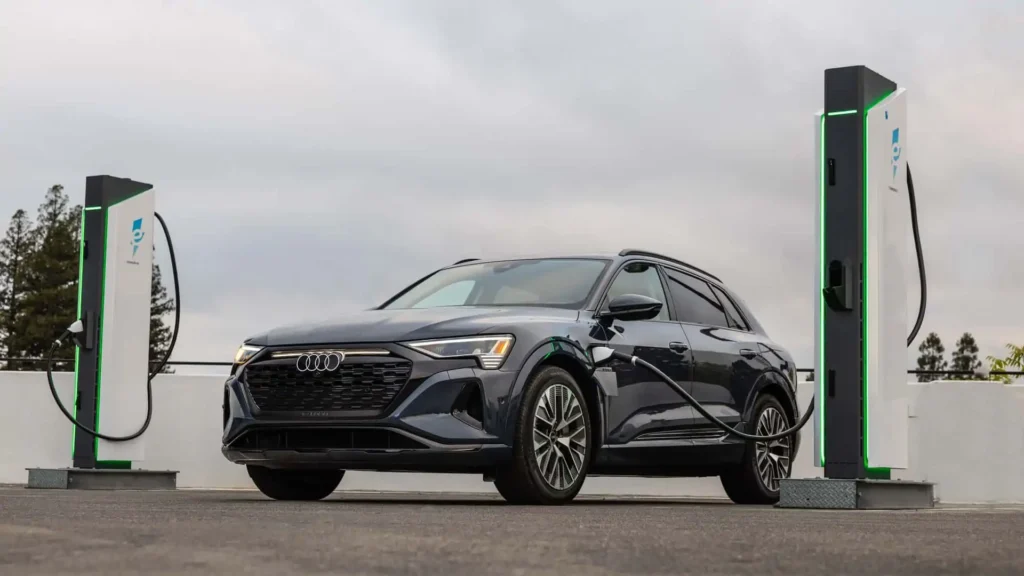
GLOBAL. These Electric Cars Offer Plug & Charge In 2024
Only these EVs can simply pull up to a public fast charger, plug in and begin charging. It can be a bit more complicated for other EVs.
Charging can sometimes be a real hassle, especially as more companies enter the space with apps and different payment methods. With Plug & Charge, an EV owner can pull into a public charging station and plug in to start charging immediately without needing to take extra steps to enter billing information. The charger communicates securely with the vehicle and bills the owner without the need for credit cards or a login.
Plug & Charge was enabled with the ISO 15118 standard, which covers vehicle-to-grid communications (V2G). While we’re currently in a world where EVs must be plugged in to charge, wireless charging could work with plug-and-charge in the future.
Which EVs Support Plug & Charge?
Below, we’ve gathered a list of the EVs currently available in the U.S. with Plug & Charge technology. While the models we’ve listed support Plug & Charge, some only offer the tech with certain charging brands, such as Electrify America or EVGo. It’s also worth noting that the tech is not required by any law or regulation, though many automakers are incorporating the standard for convenience and ease of use for owners.
Some automakers have also partnered with individual charging brands to provide a more seamless experience, but it’s important to clarify that these situations are not technically considered Plug & Charge. For example, Toyota told InsideEVs that bZ4X owners receive one year of complimentary charging at EVGo stations, which significantly streamlines the charging process, but the SUV does not have plug-and-charge capability.
EVs Currently Available with Plug & Charge
Audi – Electrify America
Audi e-tron GT
Audi Q4 e-tron
Audi Q8 e-tron
BMW – Electrify America
BMW iX
BMW i4
BMW i5
BMW i7
Cadillac – EVGo and Others
Cadillac Lyriq
Chevrolet – EVGo and Others
Chevrolet Bolt EV
Chevrolet Bolt EUV
Chevrolet Blazer EV
Chevrolet Equinox EV (Upcoming)
Chevrolet Silverado EV
Ford – Electrify America and Tesla Superchargers
Ford F-150 Lightning
Ford Mustang Mach-E
GMC – EVGo and Others
GMC Hummer EV Pickup and SUV
Lucid Motors – Electrify America
Lucid Air
Mercedes-Benz – Multiple
Mercedes-Benz EQB
Mercedes-Benz EQE
Mercedes-Benz EQS
Porsche – Electrify America
Porsche Macan EV
Porsche Taycan
Tesla – Tesla Superchargers
Tesla Cybertruck
Tesla Model 3
Tesla Model S
Tesla Model X
Tesla Model Y
Volkswagen – Electrify America
Volkswagen ID.4
Which EVs Could Gain Plug & Charge In The Future?
Hyundai offers the feature in Europe for the Ioniq 6, and the new Kia EV9 comes with the tech out of the box. Kia said it would roll Plug & Charge out to the rest of its fleet after the EV9, but there is no firm timeline for that to happen.
Hyundai hasn’t elaborated on future plans for the U.S. but noted that it would expand its partnerships with other charging companies in Europe to improve access and convenience. It’s worth noting that EVGo’s Autocharge function operates almost exactly like plug-and-charge, but it’s not technically the same thing. Volvo, Polestar, and Rivian can use the tech.
EV Plug & Charge Costs
Plug & Charge does not cost any more than traditional charging, and in some cases, the process may be free if the automaker has an agreement with the charger provider. The feature also doesn’t typically add to the cost of buying an EV, though newer and more desirable models may be more expensive by default.
Plug & Charge At Tesla Superchargers
Tesla owners have long had the benefit of Plug & Charge. Their vehicles and Tesla accounts are linked, so the charger automatically authenticates and begins charging upon plugging in. The company’s chargers are fast, at up to 250 kW, but speeds can slow as more vehicles show up to charge.
Last year, several major automakers announced that they would join Tesla’s Supercharger network using its North American Charging Standard (NACS). Ford was the first, but General Motors, Volkswagen Group, and others quickly followed it. The move will significantly improve charging access for millions of EV owners and should make the experience less stressful.
Ford has confirmed that owners will be able to Plug & Charge at Tesla Supercharger locations but noted that they would need the free BlueOVal Charge Network Membership to get the required adapter for charging. It is the first legacy automaker to issue adapters, but others will have to follow suit before transitioning to offer the plug with vehicles from the factory.
How Plug & Charge Could Improve The EV Ownership Experience
If you own an EV, you’re probably already aware of the fragmented, annoying landscape non-Tesla drivers face today. There are several charging companies, each with its own apps and billing processes, causing some owners to need multiple charging apps or authentication cards. Plug & Charge can simplify that experience by internalizing all of the authentication measures and removing reliance on an app to manage the process. Like
Tesla owners have known for over a decade that owning and charging an EV is much easier when you don’t have to worry about which charger brand you’re approaching and don’t have to think about how much money you have in a specific charging account.